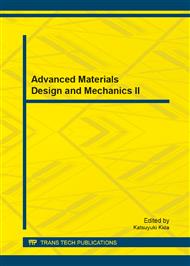p.66
p.70
p.75
p.80
p.84
p.88
p.97
p.101
p.104
Interpretation of Carbide Precipitation and Chromium Concentration Distribution of Alloy 690
Abstract:
Inconel alloy 690 which contains high chromium concentration, has replaced Inconel alloy 600 because of its high resistance of stress corrosion cracking (SCC). Inconel alloy 690 is an austenite nickel-based alloy and it has intergranular chromium carbide (M23C6). Alloy should be maintained to be nearly free from fretting wear, corrosion, and hydrogen brittleness for a several decades. Main factors controlling deterioration are initial chromium carbide size and their distribution along austenite grain boundary and chromium concentration distribution inside of grain. The precipitated carbide along grain boundary are modeled by KJMA(Kolmogorov-Johnson-Mehl-Avrami) equation. The model is based on the classical nucleation theory, and Cr diffusion controlled growth followed by coarsening. The distribution of the chromium concentration near grain boundary with time is based on diffusion of chromium. The simulated results are compared with the experiments from literatures to confirm the validity of model.
Info:
Periodical:
Pages:
84-87
Citation:
Online since:
August 2013
Keywords:
Price:
Сopyright:
© 2013 Trans Tech Publications Ltd. All Rights Reserved
Share:
Citation:


